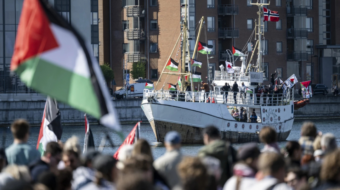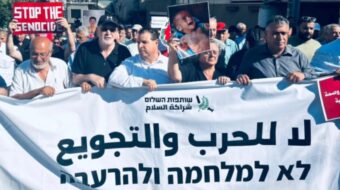In the wake of repeated incidents in which over 130 Afghan civilians have been killed this year during U.S. and NATO military operations, opposition to the Western troop presence is escalating in Afghanistan, and concern is growing among European Union countries whose soldiers serve there.
On May 8, Afghanistan’s Senate passed a bill urging talks with the Taliban, a cease-fire, a requirement that foreign troops should not attack the Taliban unless they are attacked first or have consulted with Afghan authorities, and a date for withdrawal of foreign troops. To become law, the bill must be passed by the lower house of Parliament and signed by President Hamid Karzai.
Even Karzai, hand-picked by the U.S. to lead Afghanistan in the aftermath of Sept. 11, 2001, told a press conference earlier this month, “It is difficult for us to continue to tolerate civilian casualties.”
German Defense Minister Franz Josef Jung, whose country has 3,000 troops in Afghanistan, told a meeting of EU foreign ministers this week, “We have to make sure that in the future, operations do not take place in this way. We don’t want the population against us. We have to prevent that.”
The issue is also likely to figure in talks May 20-21 when NATO Secretary-General Jaap de Hoop Scheffer visits President Bush at Bush’s Texas ranch.
Nearly 50,000 foreign troops are in Afghanistan, over half of them from the U.S. A NATO-led International Security Assistance Force of some 37,000 soldiers includes 14,000 from the U.S. and is commanded by a U.S. general. A 13,000-strong separate U.S.-led counterterrorism mission, formerly called Operation Enduring Freedom, includes more than 10,000 U.S. soldiers.
Originally, NATO troops were mainly charged with providing security and supporting civilian reconstruction efforts, but their increasing deployment into southern and eastern areas has brought them into combat with extremist Taliban forces. The separate U.S.-led force has targeted Taliban and Al Qaida fighters.
Among incidents this year:
• In March, after a suicide bomb attack wounded one of its members in eastern Afghanistan near Jalalabad, a Marine Special Operations platoon mounted assaults along a 10-mile stretch of road, killing 19 Afghan civilians and wounding 50 more.
• In late April, in western Herat Province, U.S. air strikes killed some 57 civilians, almost half of them women and children. Although the U.S. forces claimed Taliban insurgents fired on them, village residents said no Taliban forces were in the area.
• In early May, in southern Helmand Province, air strikes called in by U.S. Special Forces killed up to 80 civilians.
NATO troops have also been involved in such incidents.
Meanwhile, the Pentagon said May 9 that it will send more troops to Afghanistan. By early May, at least 320 U.S. soldiers had died in Afghanistan, Pakistan and Uzbekistan as a result of the U.S. invasion of Afghanistan.
mbechtel @pww.org









